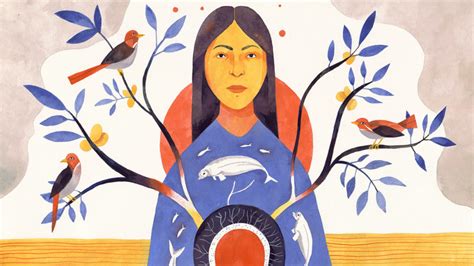“You take care of the land, and the land will take care of you.”
— Haudenosaunee principle of reciprocity
For decades, forward‑looking executives have been told to “go sustainable.” Yet the planet’s vital signs keep flashing red. What if the ceiling of sustainability—doing less harm—has become yesterday’s ambition? Indigenous peoples worldwide have long practised something bolder: regeneration—actively restoring the living systems that restore us in return. The knowledge system behind that practice is Traditional Ecological Knowledge (TEK), and it offers a fresh blueprint for leaders who want their organizations to be part of the solution rather than a slower version of the problem.
TEK in a Nutshell
Anthropologist Fikret Berkes defines TEK as “a cumulative body of knowledge, practice, and belief, handed down through generations, about the relationship of living beings with one another and with their environment.” Think of it as a 10,000‑year R&D lab, refined through observation, story, and ritual. Unlike Western science, which often slices reality into isolated variables, TEK is holistic, relational, and values‑driven:
-
Relational worldview. Humans, rivers, salmon, and cedar are kin, not resources.
-
Stewardship & reciprocity. Every right to harvest is balanced by a duty to give back.
-
Adaptive learning. Knowledge is updated each season through careful watching and communal storytelling.
-
Distributed authority. Decisions are made closest to the ground—by those who feel the consequences fastest.
Why Regeneration Trumps “Sustainability”
Sustainability asks: How do we meet today’s needs without compromising the future?
Regeneration asks a tougher question: How do we leave people, places, and systems healthier than we found them? One is defensive; the other is creative. TEK shows that when communities manage for abundance—burning undergrowth to renew forest floors, building clam gardens to expand habitat—ecosystems rebound and human prosperity follows. In business terms, regeneration flips ESG from risk‑mitigation to opportunity‑creation: new revenue in circular products, deeper stakeholder trust, and teams energized by purpose.
Five TEK Principles Every Leader Can Use
| TEK Principle | Leadership Translation | Micro‑Application |
|---|---|---|
| Everything is connected. | Adopt systems thinking; map second‑ and third‑order effects before acting. | Use a “ripple worksheet” in project kick‑offs: who/what will be helped, harmed, or ignored by this decision in 1 week, 1 year, 10 years? |
| Reciprocity. | Replace extractive KPIs with mutual‑benefit metrics. | Pair each quarterly revenue goal with a community or ecosystem vitality metric—and give them equal airtime in board reviews. |
| Knowledge lives on the ground. | Distribute authority to the people closest to the customer, the supply field, or the codebase. | Create rotating “knowledge circles” where front‑line staff co‑decide process improvements with executives. |
| Observe, adapt, repeat. | Make experimentation and reflection part of the org’s heartbeat. | After every sprint, hold a 30‑minute “story harvest”: What did the data, the users, and the land teach us? |
| Accountability through restoration. | When harm occurs, focus on making things right, not just legal compliance. | If a project overruns its carbon budget, fund a habitat‑restoration project designed with local tribes instead of buying generic offsets. |
Case Snapshot: Patagonia’s Regenerative Cotton
Outdoor‑apparel brand Patagonia discovered that even organic cotton left soils degraded in arid regions. Inspired by Indigenous polyculture systems, it piloted regenerative organic cotton—intercropping, composting, and animal integration—to rebuild soil carbon. Yields rose, water retention improved, and the marketing story wrote itself: We don’t just avoid harm; we heal. The pilot is now scaling across India and the U.S. TEK principles—reciprocity, long‑horizon thinking, distributed authority (farmers as co‑designers)—were woven into the program’s DNA.
Leading the TEK Way: A 3‑Step Roadmap
-
Listen before you leap.
Action: Invite Indigenous knowledge holders or local ecological stewards to a learning dialogue. Compensate them as expert consultants. Ask: What does this landscape need to thrive? -
Translate insight into governance.
Action: Add at least one TEK‑inspired practice to your operating system—e.g., a “reciprocity ledger” that tracks how every project gives back to community and biosphere. -
Measure what regenerates.
Action: Complement financial dashboards with “living metrics”: soil organic carbon, employee well‑being scores, supplier livelihood indices. Tie leadership bonuses to improvements in those numbers.
The Talent Dividend
Gen Z and Millennial employees want more than carbon‑neutral pledges; they want to work for companies that restore. Embedding TEK principles signals authenticity and moral courage, two magnets for top talent in a tight labor market. It also unlocks cognitive diversity: when Indigenous scientists, systems engineers, and marketers co‑create solutions, breakthrough innovation follows.
Pitfalls to Avoid
-
Token consultation. One meeting and a land‑acknowledgment slide do not constitute partnership.
-
Cultural appropriation. TEK is community intellectual property; always secure free, prior, and informed consent (FPIC) before using it commercially.
-
Static thinking. TEK is living knowledge. Treat it as an evolving dialogue, not a museum artifact.
Closing Thought: Leadership as “Good Ancestor Work”
The late Māori scholar Moana Jackson said, “The most important time is not the future but the past—because the past gives us the lessons we need to carry into the future.” TEK offers leaders those lessons, encoded in story, song, and stewardship protocols that have kept landscapes resilient for millennia. By shifting from sustainability’s do‑less‑harmstance to regeneration’s leave‑it‑better mandate, leaders can become the ancestors their grandchildren will thank.
The choice is stark: keep optimizing yesterday’s playbook, or learn from the oldest living MBA on earth—Mother Nature, as tutored by the peoples who know her best. Which path will you take?

Good https://is.gd/tpjNyL
Awesome https://is.gd/tpjNyL